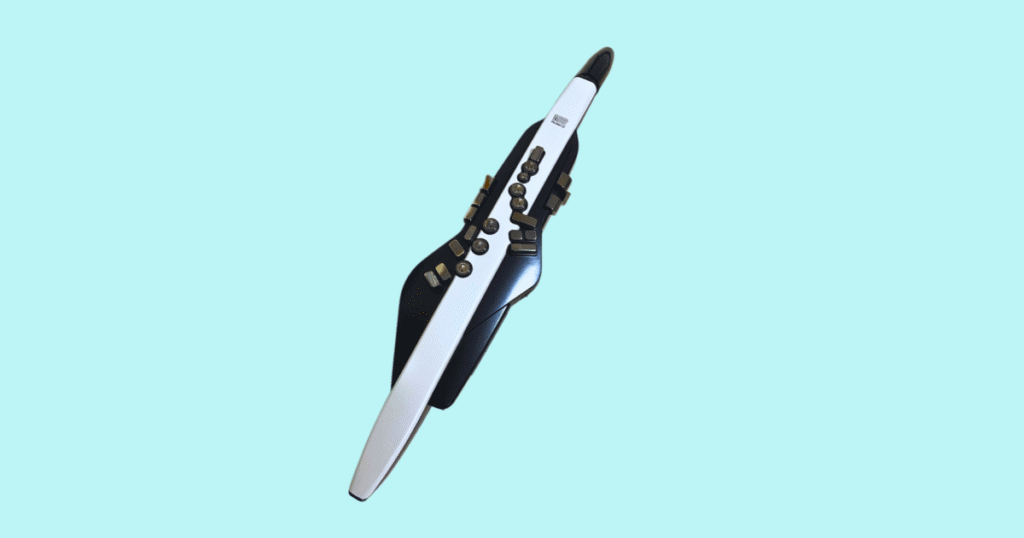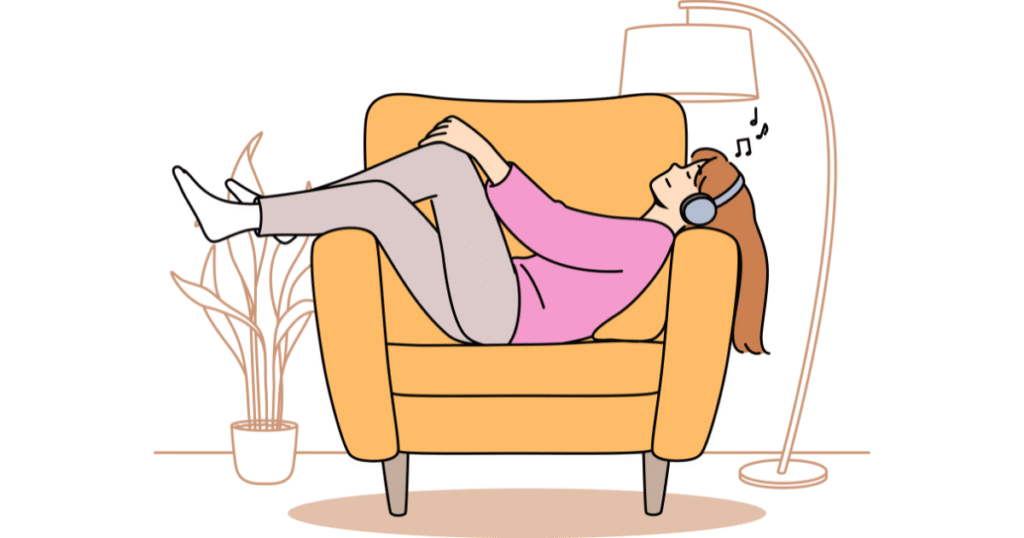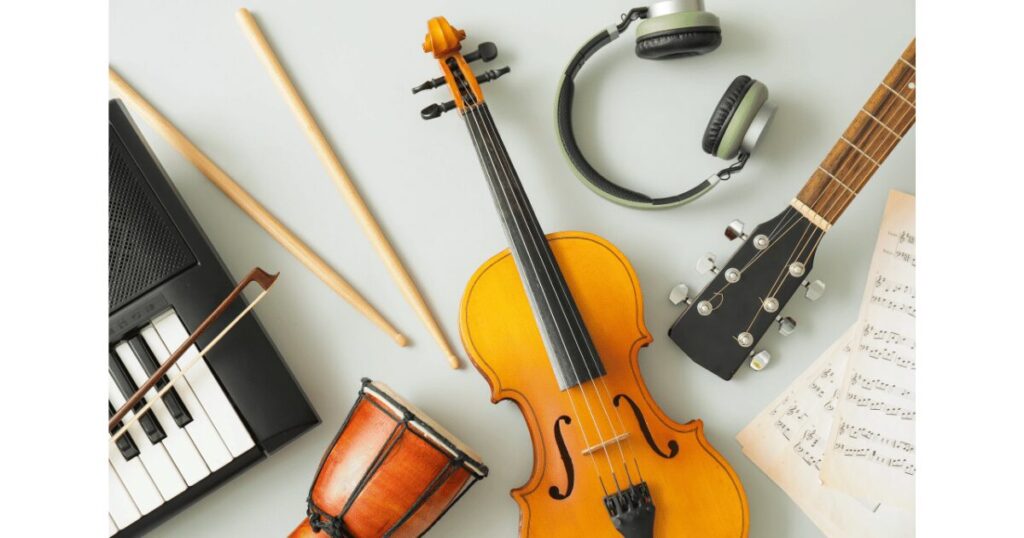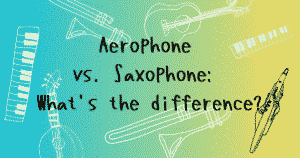Hello, I’m Shuko!

Have you heard of digital wind instruments (electronic saxophones)?
Are you thinking about starting a musical instrument but not sure which one to choose?
Have you only ever played the recorder in school?
Do you live in an apartment or a condo and worry about noise and vibrations?
Do you prefer to learn on your own?
If any of these sound like you, I have the perfect instrument to recommend!
Digital wind instruments (electronic saxophones)!
In this article, I’ll share how I discovered the digital wind instrument (Aerophone) and what makes it so great.
What Is a Digital Wind Instrument (Electronic Saxophone)?
A digital wind instrument is a musical instrument that produces sound simply by blowing into it.
And melodies can be played by pressing and releasing buttons.
It is also known as an electronic wind instrument or a wind synthesizer.
Shaped similarly to traditional wind instruments like the saxophone or recorder, some of the most well-known models include:
- AKAI: EWI
- YAMAHA: Digital Saxophone YDS
- Roland: Aerophone
These three models are often compared.


How I Discovered Digital Wind Instruments
I first learned about digital wind instruments during the COVID-19 pandemic when going out was restricted, and I had more time at home.
At first, I thought things would settle down soon, so I spent my time enjoying games, TV, and YouTube.
However, after six months, then a year, it became clear that the situation wasn’t changing anytime soon. I started getting a bit tired of games and TV.
I played electronic piano occasionally, but I found myself wanting to try a completely new instrument!
Since I needed something that wouldn’t make too much noise and could be practiced at home, I naturally started looking into electronic instruments.
That’s when I came across silent violins, silent guitars, and digital wind instruments.
Violin seemed way too difficult (at least in my mind), so I ruled it out.
Silent guitars still produced some sound, which made me hesitate, considering my neighbors.
But then—I read that digital wind instruments produce sound easily just by blowing into them!
I thought, “Maybe even a complete beginner can play this?”
After researching more, I decided to buy the Roland Aerophone AE-20 in June 2022.
If you’re curious about Aerophones, be sure to check out the Roland official website.


The Appeals of Digital Wind Instruments
Easy to Produce Sound
The biggest advantage is how easy it is to produce sound, even for beginners.
Even if you’ve only ever played a recorder, you can simply put it in your mouth, blow air into it, and get a solid sound right away.
The fingering is also similar to that of a recorder (though the default setting is actually saxophone fingering).
When I first played it, I positioned my fingers, lifted them one by one from the bottom, and—just like that—I was able to play Do-Re-Mi-Fa-So-La-Ti-Do!
It was such an exciting moment.
Silent Performance
One of the greatest advantages, on par with the ease of producing sound, is that you can connect headphones and play without worrying about disturbing those around you.
Acoustic instruments like the saxophone or guitar produce sound, and even electronic instruments like digital pianos or electronic drums can create vibrations that may be a concern.
However, with the Aerophone, you can practice freely without worrying about your surroundings—whether it’s early in the morning or late at night.
Lightweight
The weight of a saxophone varies depending on the type and model.
Generally, a soprano saxophone weighs around 1–2 kg, an alto saxophone 2–3 kg, a tenor saxophone 3–4 kg, and a baritone saxophone can be as heavy as 6–8 kg, making it impossible to avoid strain on the neck and shoulders.
Like a saxophone, the Aerophone is played with a neck strap.
However, the AE-20 weighs only 1.1 kg, including the batteries, making it significantly lighter.
As someone who suffers from severe shoulder stiffness, I truly appreciate how lightweight it is.
It puts minimal strain on my body and is easy to handle.
Wide Variety of Tones
With a vast selection of built-in tones, you can enjoy not only saxophone sounds but also those of other wind instruments like the flute, as well as piano, drums, violin, guitar, and more—over 250 tones in total.
Even within the saxophone category, you can switch between soprano, alto, tenor, and baritone.
This allows you to change tones based on your mood.
You can also try playing sheet music for instruments other than the saxophone, offering endless ways to enjoy the experience.


Can Be Connected to a Computer or Smartphone
The Aerophone can be connected to a computer, smartphone, or tablet.
For example, you can play along with a backing track, practice with a metronome, or perform without anyone around you hearing the sound.
Of course, you can also play with the sound output if you prefer.
Practice Apps and Guidebooks Available
The first thing I tried when my Aerophone arrived was the “Aerophone Lesson” app.
By connecting it to a smartphone via Bluetooth, the app provides lessons on how to use, play, and maintain the instrument.
It also includes fingering exercises and practice songs.
Additionally, the “Aerophone Song & Guidebook” (likely available only in Japanese) explains how to operate the Aerophone with plenty of photos and includes 11 well-known songs with a CD.
From the day your Aerophone arrives, you can fully enjoy it with the app and guidebook!
Connectable to Amps and Speakers
When performing in front of an audience, the built-in speaker of the Aerophone may not provide enough volume.
In such cases, connecting it to an amplifier allows you to produce a louder sound.
Battery-Powered
Since it runs on batteries, you can play it outdoors or in places without a power source.
You can also enjoy playing it anywhere inside your home.
For example, by connecting a battery-powered Aerophone to a battery-powered amplifier, you can perform at high volume even in outdoor locations or large venues without access to power.
Others
I haven’t fully mastered all the features yet, but the Aerophone supports MIDI and allows you to create your own custom tones using the Aerophone Pro Editor app.
The more you use it, the more you’ll discover its many fascinating aspects!
Summary
If you’re looking to start learning a new instrument or want something you can practice at home, I hope digital wind instruments become one of your options.
Let’s enjoy playing together!
Thank you for reading until the end.




